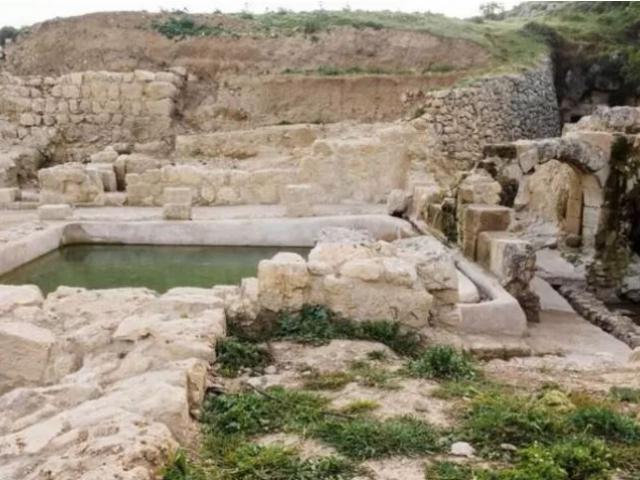Israel archaeologists announced the discovery of a large pool and a fountain dating back 1,500 years at the site of an ancient church near Jerusalem.
The discovery of the large pool at Ein Hanniya Park is getting a lot of attention. The site may be where the Ethiopian eunuch’s conversion as recorded in the New Testament took place.
“We believe that some early Christian commentators identified Ein Hanniya as the site where the Ethiopian eunuch was baptized, as described in Acts 8:26–40,” said Jerusalem District Archaeologist Dr. Yuval Baruch, in a statement. “The baptism of the eunuch by St. Philip was one of the key events in the spread of Christianity. Therefore, identifying the place where it occurred occupied scholars for many generations and became a common motif in Christian art.”
The pool is part of a system of pools unearthed at Ein Hanniya Park between 2012 and 2016.
According to the Israel Antiquities Authority, the pool was constructed during the Byzantine era. The pools date between the 4th and 6th centuries A.D.
“The most significant finding in the excavation is a large and impressive pool from the Byzantine period,” explained Irina Zilberbod, the excavation director for the Israel Antiquities Authority. “This pool was built in the center of a spacious complex at the foot of a church that once stood here. Roofed colonnades were built around the pool that gave access to residential wings.”
The archaeologists who excavated the site still have a lot of questions about the pool’s exact use.
“It’s difficult to know what the pool was used for – whether for irrigation, washing, landscaping or perhaps as part of baptismal ceremonies at the site,” said Zilberbod. The pool’s water, she noted, drained through a network of channels to a fountain.
Engineers have restored the ancient water systems and water now flows from the pool to the fountain like it did in ancient times.
Other artifacts found included a silver coin from the 4th century B.C. and an ancient capital, or part of a pillar. Archaeologists say that the capital is typical of royal structures found the First Temple period between 960 B.C. and 586 B.C.
Baruch said part of the site is still owned by Christians and is a focus of religious ceremonies by the Armenian Church and the Ethiopian Church.


